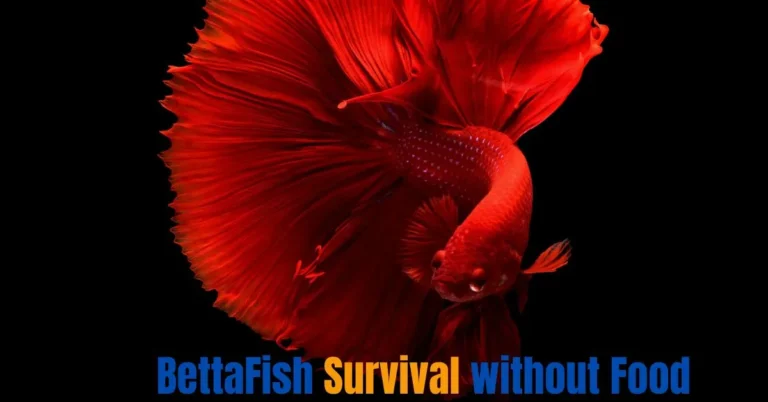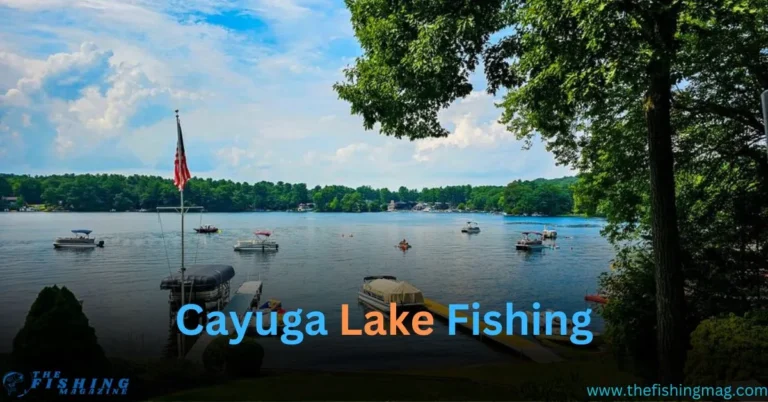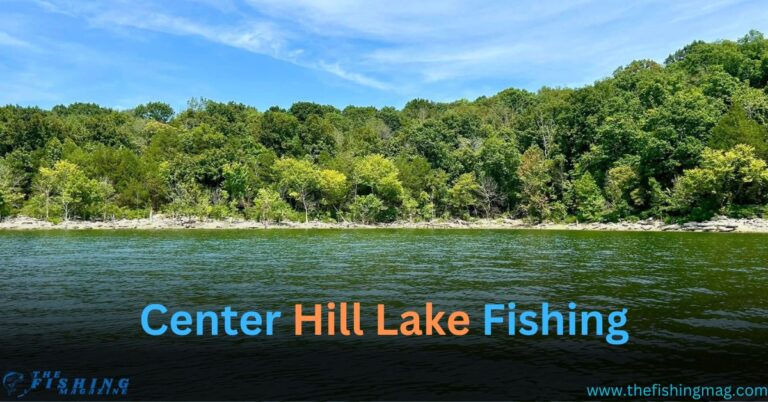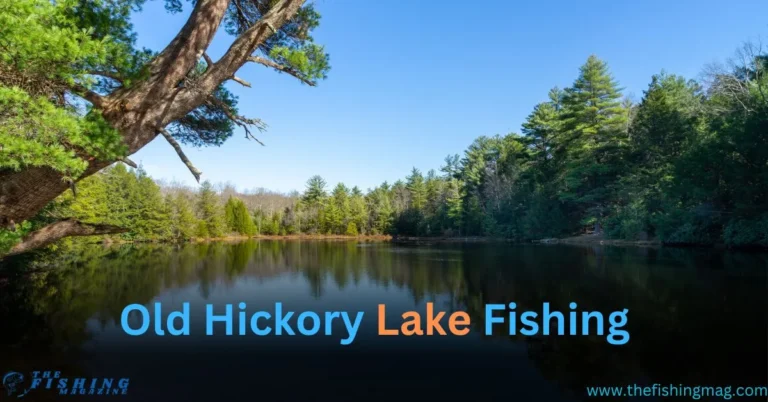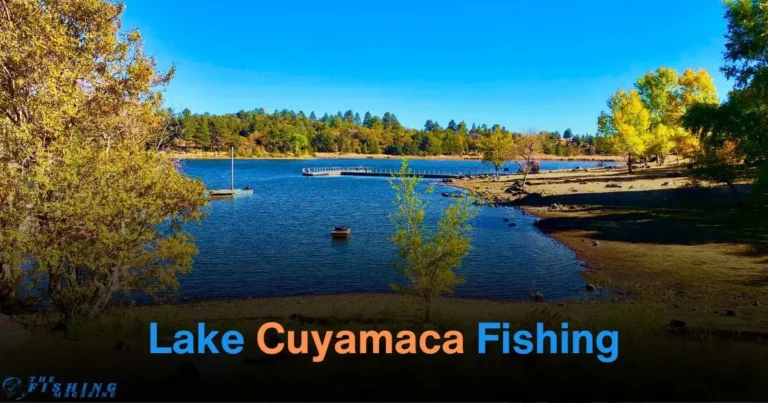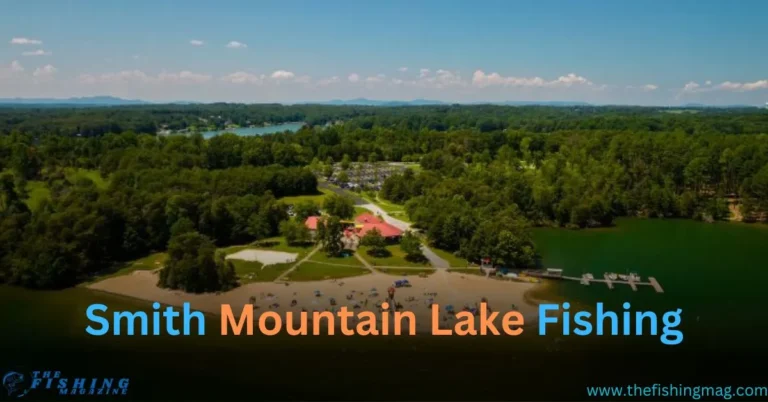Green River fishing is an angler’s paradise, offering some of the best fishing opportunities in the United States. Flowing through Wyoming, Utah, and Colorado, the Green River is renowned for its stunning scenery and diverse fish populations.
Whether you’re a fly fishing enthusiast or prefer spin fishing, this river offers something for everyone. The Green River is especially famous for its trout fishing, but it also hosts other species that attract anglers from all over the world.
In this comprehensive guide, we’ll explore everything you need to know about fishing on the Green River. From the best fishing spots, tips and techniques, to seasonal considerations and fishing regulations, we’ll cover all the essential details to help you have a successful and enjoyable fishing trip.
Introduction: Why Fish at Green River?
The Green River is considered a world-class fishing destination for a reason. Its clear waters, stunning canyons, and abundance of fish species make it an ideal spot for anglers of all levels. Whether you’re fly fishing for trout in the famous Flaming Gorge section or casting your line in the river’s lower stretches, the Green River offers a fishing experience that is both challenging and rewarding.
One of the most popular stretches of the river for fishing is below Flaming Gorge Dam in Utah, often referred to as the “A Section.” This area is famous for its trophy-sized trout, especially rainbow and brown trout. The Green River’s healthy ecosystem, combined with effective management by state wildlife agencies, ensures that fish populations remain strong year after year.
Whether you’re planning a multi-day fishing trip or just a day on the water, the Green River provides an unforgettable experience for any angler.
Best Fishing Sections of the Green River
The Green River offers a variety of fishing opportunities along its course. Here’s a breakdown of the most popular sections of the river for anglers:

Flaming Gorge Tailwater (A, B, and C Sections)
- A Section: The most famous and heavily fished section of the Green River, the A Section runs from Flaming Gorge Dam to Little Hole, covering about 7 miles. This stretch is known for its crystal-clear water and large populations of rainbow and brown trout. Fly fishing is the most popular method in this section, with dry flies, nymphs, and streamers all being effective.
- B Section: The B Section runs from Little Hole to Indian Crossing, covering another 9 miles. While not as heavily fished as the A Section, the B Section still offers excellent fishing opportunities, especially for brown trout. The water here is a bit more challenging, with stronger currents and deeper pools.
- C Section: The C Section continues from Indian Crossing down to the Colorado border. This section is less crowded than the previous two and offers a more remote fishing experience. The trout population is still strong, and this area is great for anglers looking to get away from the more popular spots.
The Lower Green River in Wyoming
As the Green River flows through Wyoming, it offers a more varied fishing experience. While trout are still the main target, other species like smallmouth bass, catfish, and pike can also be found in this section of the river. The lower Green River provides a more relaxed fishing atmosphere, with plenty of opportunities for wading, drifting, and shore fishing.
Targeted Fish Species in the Green River
The Green River is home to a variety of fish species, making it a versatile fishing destination. Here’s a look at the most popular species you can target:
Rainbow Trout
Rainbow trout are one of the most sought-after species in the Green River, particularly in the A Section below Flaming Gorge Dam. These vibrant fish are known for their acrobatic jumps and strong fights, making them a favorite among fly fishers and spin anglers alike. Rainbow trout are most active in the spring and fall, but they can be caught year-round in the Green River.
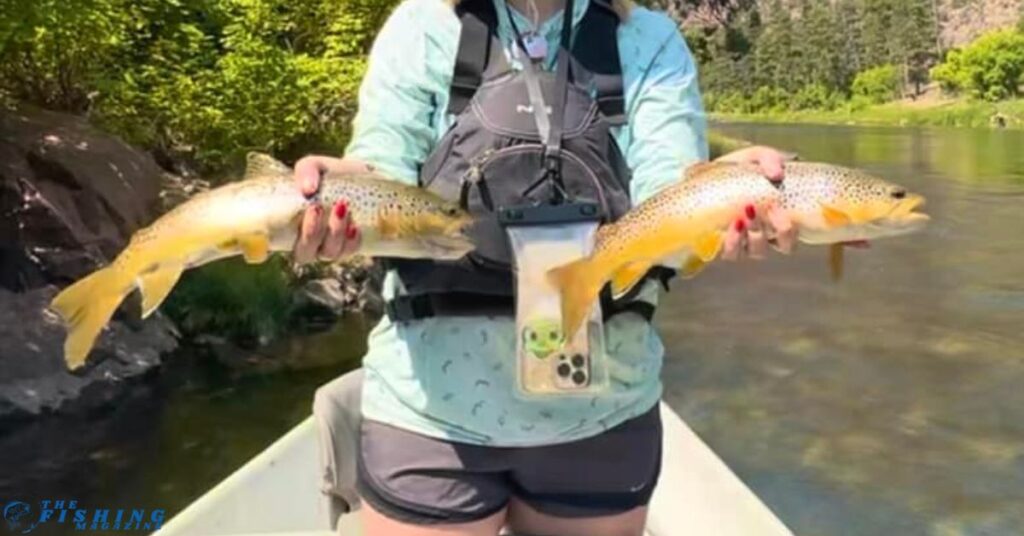
Best Tips for Rainbow Trout Fishing:
- Use light tippet and small flies to match the hatch, especially during dry fly season.
- Target riffles, runs, and deeper pools where rainbow trout tend to congregate.
- Nymph fishing can be very effective, particularly with patterns that mimic aquatic insects.
Brown Trout
Brown trout are another prized species in the Green River. These fish are known for their wariness and strength, often putting up a fierce fight when hooked. Brown trout are more common in the B and C Sections of the river, but they can also be found in the A Section. Fall is an excellent time to target brown trout, as they become more aggressive during the spawning season.
Best Tips for Brown Trout Fishing:
- Streamers and larger flies work well for brown trout, especially in low-light conditions.
- Focus on fishing near structure, such as rocks, undercut banks, and fallen trees, where brown trout like to hide.
- Be patient and stealthy – brown trout can be more challenging to catch than rainbows.
Cutthroat Trout
Cutthroat trout are native to the Green River and can be found in certain sections of the river, particularly in the upper stretches. These fish are known for their distinctive red slash marks under their jaws and are a prized catch for anglers seeking native trout species.
Best Tips for Cutthroat Trout Fishing:
- Cutthroat trout are often less wary than rainbows and browns, making them more likely to rise to dry flies.
- Use attractor patterns, such as hoppers and stimulators, especially in the summer months.
- Fish in the upper, more remote sections of the river for the best chances of catching cutthroat trout.
Smallmouth Bass
In the lower stretches of the Green River, particularly in Wyoming, smallmouth bass become a primary target for anglers. These aggressive fish provide a different kind of challenge than trout, and they can be caught using a variety of lures and techniques.
Best Tips for Smallmouth Bass Fishing:
- Use crankbaits, spinnerbaits, and soft plastics to target smallmouth bass near rocks, submerged logs, and other structures.
- Fish during the warmer months, when smallmouth bass are most active.
- Try topwater lures during the early morning and late evening for exciting surface strikes.
Best Fishing Techniques for the Green River
The Green River offers opportunities for both fly fishing and spin fishing, depending on your preference and the section of the river you’re fishing. Here are some of the best techniques to use:
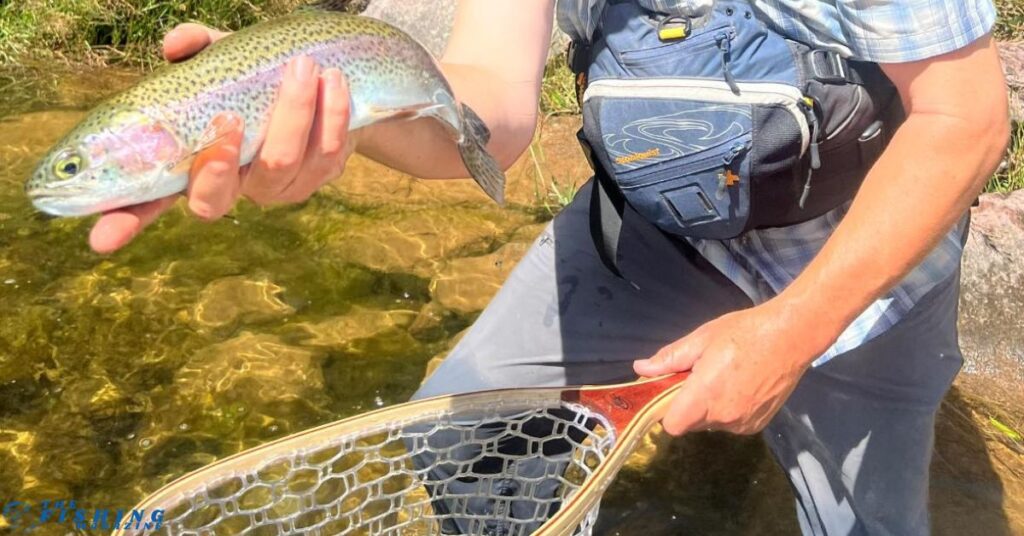
Fly Fishing
Fly fishing is the most popular method for targeting trout on the Green River, especially in the A Section below Flaming Gorge Dam. The river’s clear water and abundant insect life make it ideal for dry fly fishing, nymphing, and streamer fishing.
- Dry Fly Fishing: Dry fly fishing is particularly effective during hatches, when trout are feeding on the surface. Matching the hatch with the right fly pattern is crucial for success. Mayflies, caddisflies, and midges are common insects on the Green River.
- Nymphing: When trout aren’t rising to dry flies, nymph fishing can be very productive. Using small nymph patterns, such as pheasant tails, hare’s ears, and scuds, under an indicator or tight-line nymphing can help you reach fish feeding below the surface.
- Streamer Fishing: Streamer fishing is a great way to target larger trout, particularly brown trout. Streamers imitate baitfish and can be fished in deeper pools and along the banks where big trout like to ambush their prey.
Spin Fishing
For those who prefer spin fishing, the Green River offers plenty of opportunities to catch trout and other species using spinning gear. Lures, such as spinners, spoons, and crankbaits, can be very effective, particularly in the lower sections of the river.
- Spinners and Spoons: These lures work well for both trout and smallmouth bass. Cast them upstream and retrieve them with a steady motion, allowing the lure’s flash and vibration to attract fish.
- Crankbaits: Crankbaits are particularly effective for targeting smallmouth bass in the lower stretches of the Green River. Choose lures that mimic the local baitfish and fish them near structure.
- Live Bait: Live bait, such as worms, minnows, and crayfish, can also be used on the Green River, particularly for targeting bass and catfish in the lower sections.
Seasonal Considerations for Green River Fishing
The best time to fish the Green River depends on the species you’re targeting and the section of the river you’re fishing. Here’s a breakdown of the seasonal fishing opportunities:

- Spring (March to May): Spring is an excellent time for trout fishing on the Green River. As the water warms up, trout become more active, and hatches begin. This is prime time for dry fly fishing and nymphing, particularly in the A Section below Flaming Gorge Dam.
- Summer (June to August): Summer brings warmer temperatures, which can make fishing more challenging during the heat of the day. Early mornings and late evenings are the best times to fish during the summer. This is also a great time to target smallmouth bass in the lower stretches of the river.
- Fall (September to November): Fall is one of the best times to fish the Green River, especially for brown trout. As the water cools down, trout become more aggressive, feeding heavily before the winter. Streamer fishing is particularly effective during the fall.
- Winter (December to February): Winter can be a slower time for fishing on the Green River, but hardy anglers can still find success, particularly in the tailwater section below Flaming Gorge Dam. Nymphing and streamer fishing are the most effective techniques during the colder months.
Fishing Regulations and Licensing
Before you head out to fish on the Green River, it’s important to be aware of the fishing regulations and licensing requirements. Each state that the Green River flows through has its own regulations, so make sure you’re familiar with the rules for the area you’ll be fishing in.
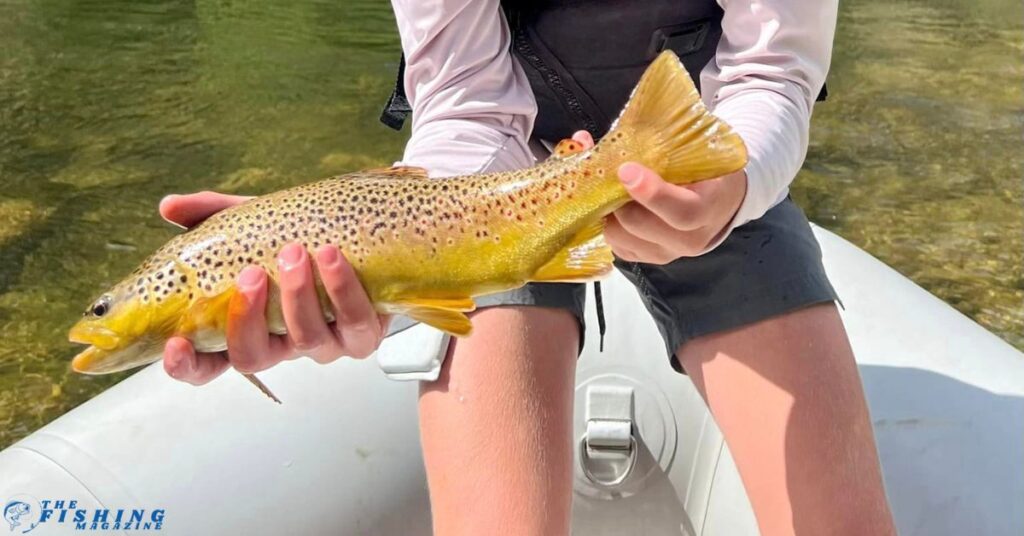
- Wyoming: If you’re fishing the Green River in Wyoming, you’ll need a Wyoming fishing license. Special regulations apply to certain sections of the river, including limits on the size and number of fish you can keep.
- Utah: In Utah, a Utah fishing license is required. The A, B, and C Sections of the Green River below Flaming Gorge Dam are subject to special regulations, including catch-and-release requirements for certain species.
- Colorado: If you’re fishing the Green River in Colorado, you’ll need a Colorado fishing license. Regulations vary by section, so be sure to check the rules before you fish.
Green River Fishing Charters
Green River is a top-tier fishing destination, known for its crystal-clear waters, breathtaking scenery, and some of the best trout fishing in the country. Whether you’re a seasoned angler or a beginner looking for an unforgettable experience, Green River fishing charters provide everything you need for a successful day on the water. With expert guides, top-notch equipment, and access to the best fishing spots, booking a charter is the perfect way to make the most of your Green River adventure.
Why Choose a Fishing Charter on Green River?
Expert Local Guides
Fishing guides on the Green River have years of experience and deep knowledge of the river’s currents, fish behavior, and seasonal patterns. They’ll help you refine your technique, choose the right bait, and locate trophy-sized brown trout, rainbow trout, and cutthroat trout.
Access to Prime Fishing Spots
Many of the best fishing locations on Green River are difficult to reach without a boat. A guided fishing charter ensures you get to these hidden gems, whether you prefer fly fishing, drift fishing, or spin fishing.
Hassle-Free Experience
Fishing charters provide all the gear you need, including rods, reels, tackle, and bait. Whether you’re looking for a half-day or full-day trip, everything is arranged so you can focus on catching fish and enjoying the scenery.
FAQs About Green River Fishing
1. What is the best time of year to fish the Green River?
The best time to fish the Green River depends on the species you’re targeting. Spring and fall are generally considered the best seasons for trout fishing, while summer is ideal for targeting smallmouth bass. Winter can also be productive, particularly in the tailwater section below Flaming Gorge Dam.
2. Do I need a guide to fish the Green River?
While it’s not necessary to hire a guide, having a guide can greatly enhance your fishing experience, especially if you’re unfamiliar with the river. Guides can provide valuable local knowledge, help you choose the right flies or lures, and take you to the best fishing spots.
3. Can I fish the Green River from the shore, or do I need a boat?
You can fish the Green River from both the shore and a boat. Many anglers prefer wading or shore fishing, particularly in the A Section below Flaming Gorge Dam. However, using a drift boat or raft allows you to cover more water and access areas that are difficult to reach from the shore.
4. What flies and lures work best on the Green River?
The best flies and lures depend on the time of year and the section of the river you’re fishing. For trout, dry flies, nymphs, and streamers are all effective. Matching the hatch is crucial during dry fly season. For smallmouth bass, crankbaits, spinners, and soft plastics work well.
5. Are there any camping facilities near the Green River?
Yes, there are several campgrounds and facilities near the Green River, particularly in the Flaming Gorge National Recreation Area. Camping is a great way to extend your fishing trip and enjoy the natural beauty of the area.
Conclusion: Plan Your Next Fishing Adventure on the Green River
Green River fishing offers a unique and unforgettable experience for anglers of all levels. Whether you’re chasing trophy-sized trout in the tailwater section or targeting smallmouth bass in the lower stretches, the Green River has something to offer every angler. By planning your trip around the best seasons, using the right techniques, and being aware of the regulations, you can enjoy a successful and memorable fishing adventure on this iconic river. So grab your gear, get your fishing license, and head out to experience the incredible fishing that the Green River has to offer.

